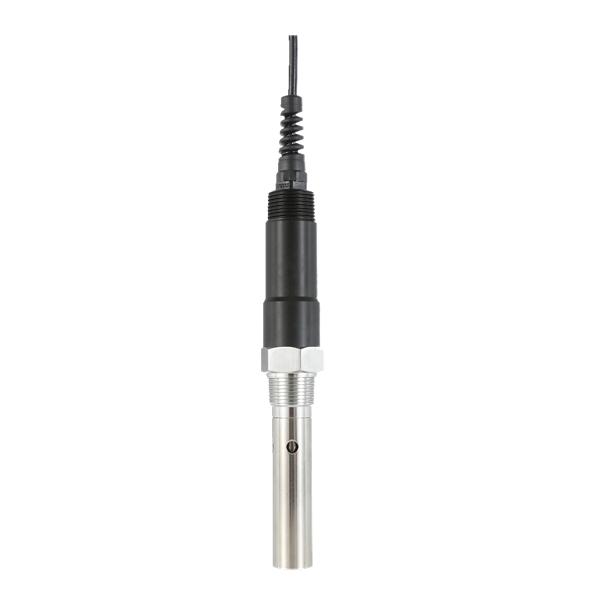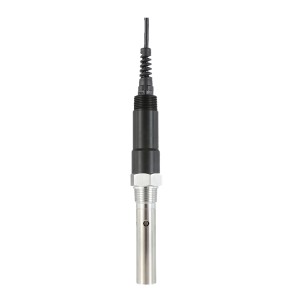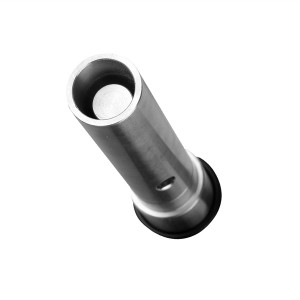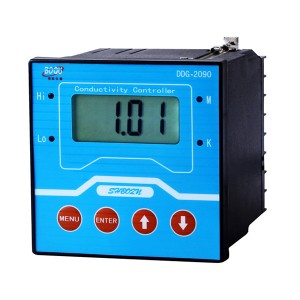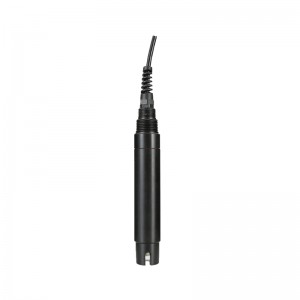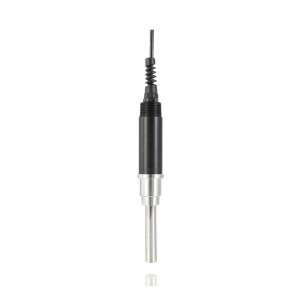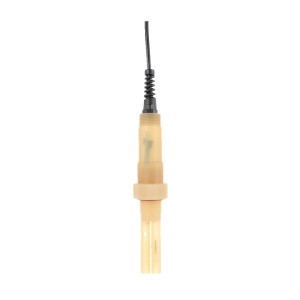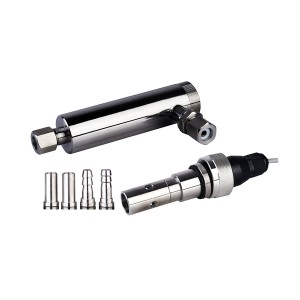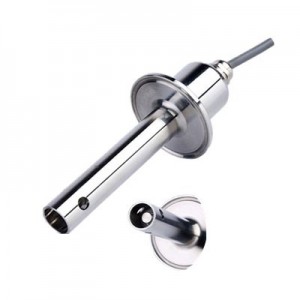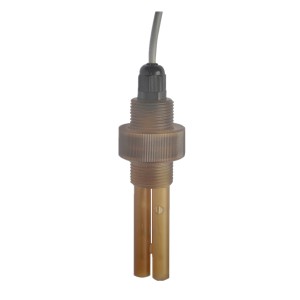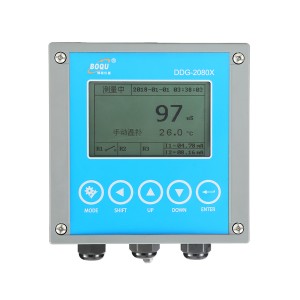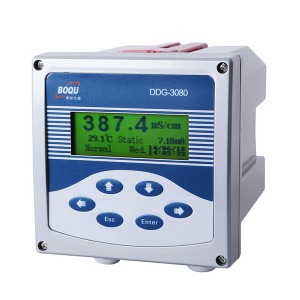The conductivity industrial series of electrodes are specially used for the measurement of conductivity value of pure water, ultra-pure water, water treatment, etc. It is especially suitable for conductivity measurement in the thermal power plant and the water treatment industry. It is featured by the double-cylinder structure and the titanium alloy material, which can be naturally oxidized to form the chemical passivation. Its anti-infiltration conductive surface is resistant to all kinds of liquid except fluoride acid. The temperature compensation components are: NTC2.252K, 2K, 10K, 20K, 30K, ptl00, ptl000, etc.
1. Constant of electrode: 0.01
2. Compressive strength: 0.6MPa
3. Measuring range: 0.01-20uS/cm
4. Connection: hard tube, hose tube, flange installation
5. Material: 316L stainless steel or Titanium Alloy
6. Application: power plant, water treatment industry
Conductivity is a measure of water’s capability to pass electrical flow. This ability is directly related to the concentration of ions in the water 1. These conductive ions come from dissolved salts and inorganic materials such as alkalis, chlorides, sulfides and carbonate compounds 3. Compounds that dissolve into ions are also known as electrolytes 40. The more ions that are present, the higher the conductivity of water. Likewise, the fewer ions that are in the water, the less conductive it is. Distilled or deionized water can act as an insulator due to its very low (if not negligible) conductivity value 2. Sea water, on the other hand, has a very high conductivity.
Ions conduct electricity due to their positive and negative charges 1. When electrolytes dissolve in water, they split into positively charged (cation) and negatively charged (anion) particles. As the dissolved substances split in water, the concentrations of each positive and negative charge remain equal. This means that even though the conductivity of water increases with added ions, it remains electrically neutral 2
Conductivity/Resistivity is a widely used analytical parameter for water purity analysis, monitoring of reverse osmosis, cleaning procedures, control of chemical processes, and in industrial wastewater. Reliable results for these varied applications depend on choosing the right conductivity sensor. Our complimentary guide is a comprehensive reference and training tool based on decades of industry leadership in this measurement.
Conductivity is the ability of a material to conduct electric current. The principle by which instruments measure conductivity is simple—two plates are placed in the sample, a potential is applied across the plates (normally a sine wave voltage), and the current that passes through the solution is measured.

